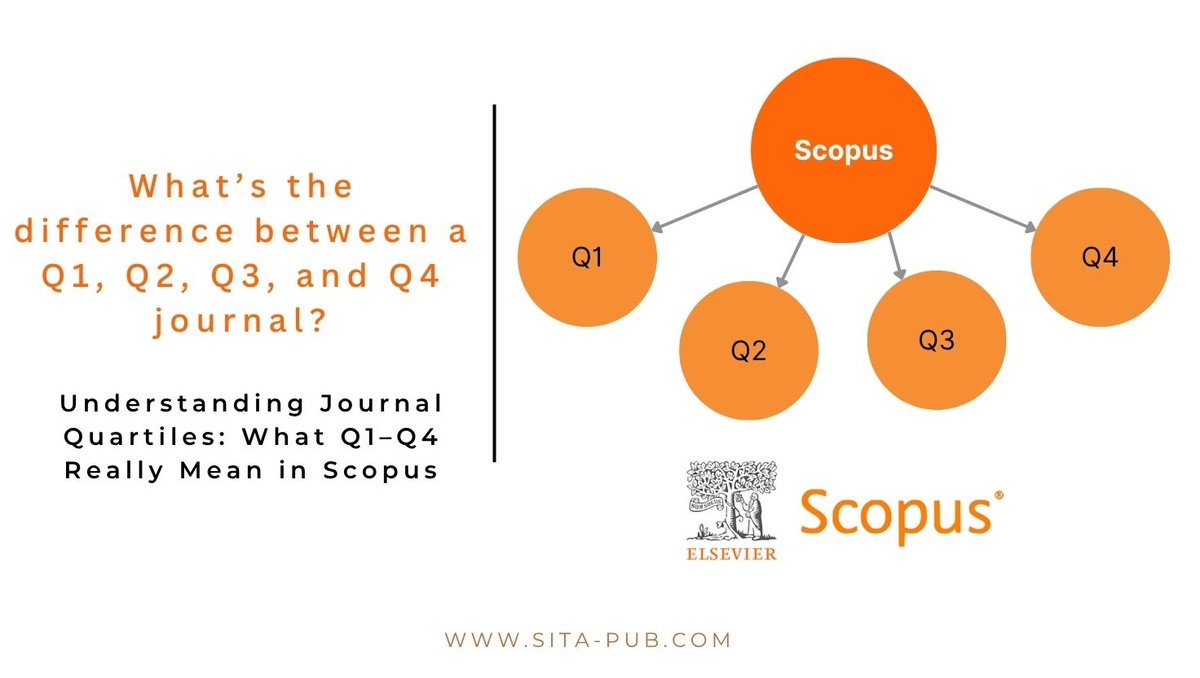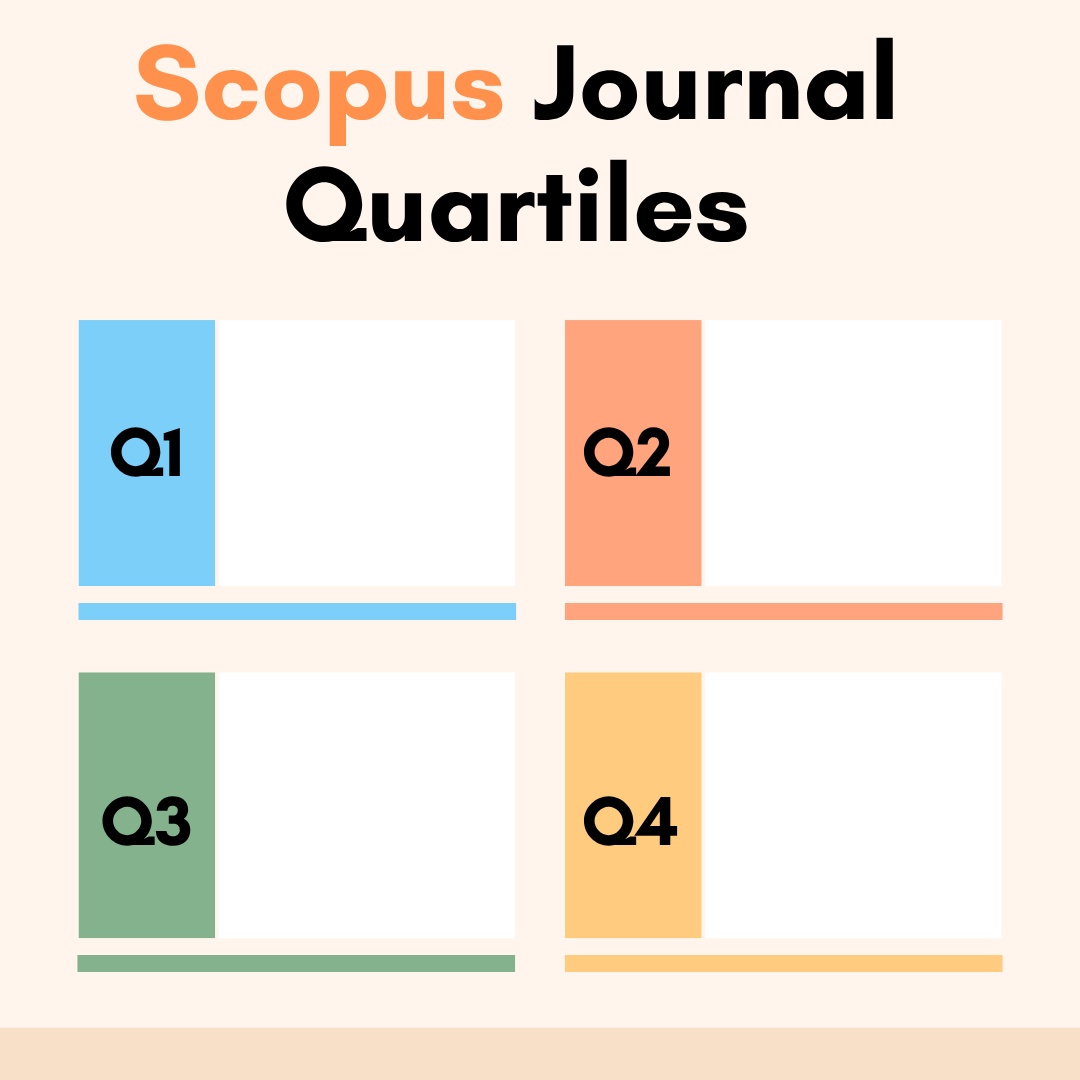What’s the difference between a Q1, Q2, Q3, and Q4 journal?


If you’re planning to publish your research in a journal indexed by Scopus, you may have noticed terms like Q1, Q2, Q3, and Q4 being mentioned. These are called journal quartiles, and they play a key role in deciding where to publish your work. This is especially important for postgraduate students, researchers, and faculty members in Saudi Arabia and the Arab world, where research impact is increasingly evaluated by the quality of the journal.
In this article, we’ll explain what these quartiles mean, how to check a journal’s quartile, how they relate to publishing fees, and which quartiles might offer easier or faster publication.
Journal quartiles are rankings used by Scopus and other databases to group journals based on their impact within a specific subject area. Think of it like dividing all journals in a field into four groups (quartiles) according to how influential and prestigious they are.
Here’s the breakdown:
Quartile | Rank Range | What It Means |
Q1 | Top 25% | The highest-ranked journals in a field; very prestigious and influential |
Q2 | 25% to 50% | Above average journals with good reputation |
Q3 | 50% to 75% | Average or mid-level journals |
Q4 | Bottom 25% | Lower-ranked journals but still indexed in Scopus |
These quartiles are based on the SCImago Journal Rank (SJR), which measures the influence, visibility, and prestige of journals by analyzing citations from Scopus data. So, a Q1 journal publishes research that is highly cited and respected in its field, while Q4 journals publish less-cited and more specialized or regional research.
Publishing in higher-quartile journals (Q1 or Q2) is often seen as a mark of quality and excellence. In many countries, including Saudi Arabia and Arab institutions, publishing in Q1 journals can boost your academic profile, help secure grants, and meet promotion criteria.
However, Q1 journals are also highly competitive, with rigorous peer review and longer waiting times. For early-career researchers or those with specific kinds of research, publishing in Q3 or Q4 journals can still be valuable, especially if the journal fits their research topic well.

To find out the quartile of a journal:
Go to the SCImago Journal Rank (SJR) website: https://www.scimagojr.com
Use the search bar to type the name of the journal you’re interested in.
Click on the journal title to open its profile.
Scroll down to see the journal’s SJR score, quartile ranking (Q1 to Q4) across different subject categories, H-index, and other metrics like citations and documents published.
Note: Some journals belong to multiple subject areas, so they might be Q1 in one category and Q2 or Q3 in another.
Many Scopus journals are open access or hybrid, meaning authors may need to pay an Article Processing Charge (APC) to publish. APCs can vary widely and are often—but not always—linked to the journal’s quartile.
Here’s a rough guide to APCs by quartile:
Quartile | Typical APC Range (USD) | Notes |
Q1 | $2,000 – $5,000+ | Prestigious journals from big publishers like Elsevier or Springer |
Q2 | $1,000 – $3,000 | Competitive pricing but still high quality |
Q3 | $500 – $2,000 | More budget-friendly |
Q4 | $0 – $1,500 | Includes many regional, open access, or fee-waived journals |
Diamond Open Access journals are often in Q4 and charge no fees at all.
Publishing is about more than just quartile—scope, journal focus, and competition matter a lot. But generally:
Q1 journals have the highest standards, strict peer reviews, and high rejection rates.
Q3 and Q4 journals usually have more flexible scopes, accept regional or niche topics, and face less competition. This can make them easier to publish in.
If you are a graduate student or submitting types of research like case reports, reviews, or survey-based studies, Q3 or Q4 journals might give you a better chance of acceptance.
Publishing speed can be important, especially if you need your work out quickly. In general:
Quartile | Typical Review & Publication Time | Comments |
|---|---|---|
Q1 | 3 to 9 months or more | Longer cycles due to detailed review |
Q2 | 2 to 6 months | Moderate speed |
Q3 | 1 to 4 months | Often faster and more efficient |
Q4 | 2 weeks to 3 months | Some journals use rapid or continuous publication |
Tip: Always check the journal’s stated “submission to first decision” or “submission to publication” times on its website or author guidelines.
Quartiles are helpful but don’t rely on them alone. Consider these additional journal metrics:
SJR (SCImago Journal Rank): Measures scientific influence and prestige.
H-Index: Reflects how productive and cited a journal’s articles are.
CiteScore: Another impact metric from Scopus.
Acceptance Rate: How many papers get accepted vs rejected (if available).
Turnaround Time: Speed of peer review and publication.
Open Access Status: Is the journal free to read? Are there APCs?
Journal Scope: Does the journal match your research field and type?

Checking all these can help you find the best fit for your paper.
Choosing a journal and preparing your manuscript can be confusing. That’s why professional scientific support services like SITA Academy have become popular, especially in Saudi Arabia and the Arab world.
They offer:
Help selecting the right Scopus-indexed journal for your study.
Assistance with formatting your paper according to journal guidelines.
Submission and communication with the journal on your behalf.
Support in both English and Arabic.
Services tailored for Master’s and PhD students, as well as faculty.

You can explore their official website for more information.
Q1 journals are prestigious, expensive, and competitive.
Q4 journals are more accessible, affordable, and ideal for early-career researchers.
Use a combination of quartiles, SJR, H-index, and CiteScore to evaluate journals.
Consider your research type, budget, and timeline when choosing where to publish.
Professional help can improve your chances of acceptance and smooth the process.
By understanding journal quartiles and related metrics, you can make smart decisions about where to publish, balancing prestige, cost, speed, and success.
If you have any questions, inquiries, or would like to learn more about our services, please don't hesitate to reach out to us. Our dedicated team is ready to assist you.